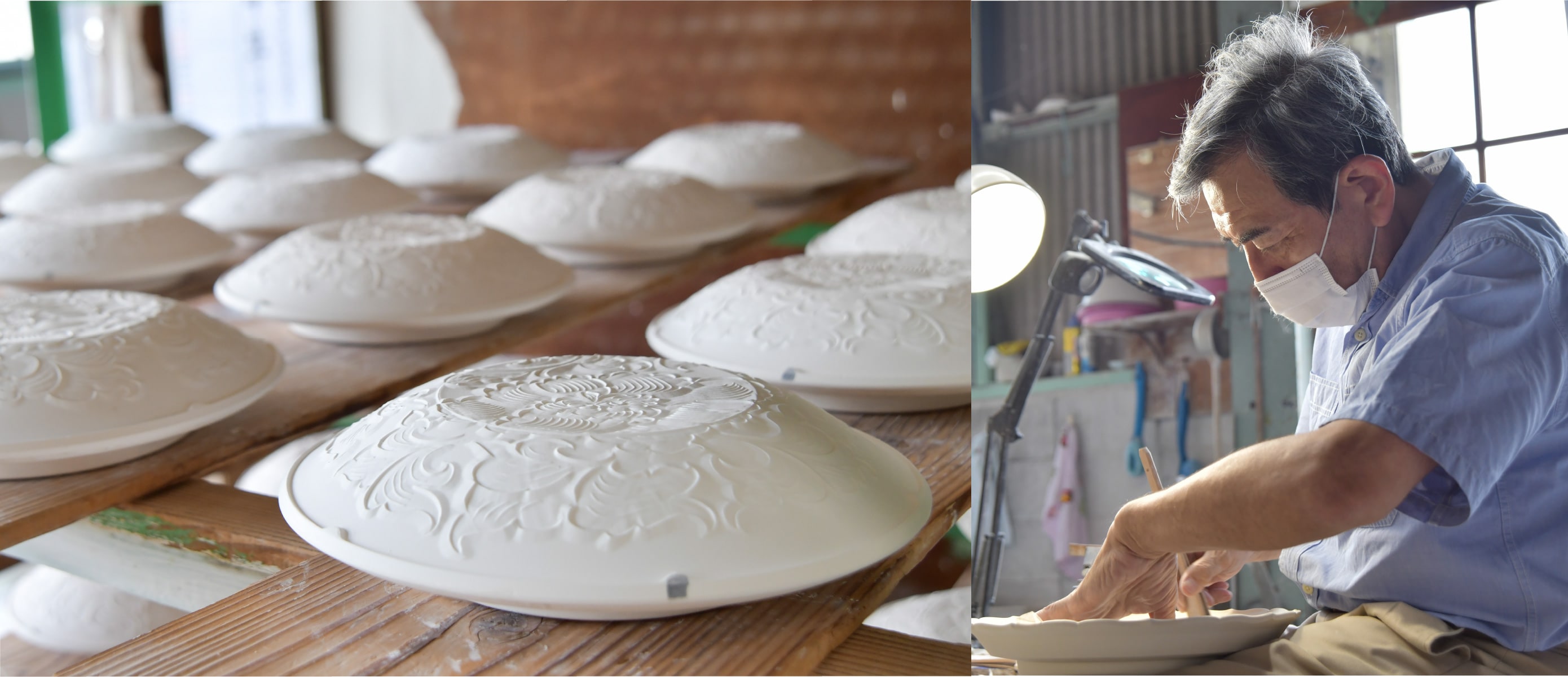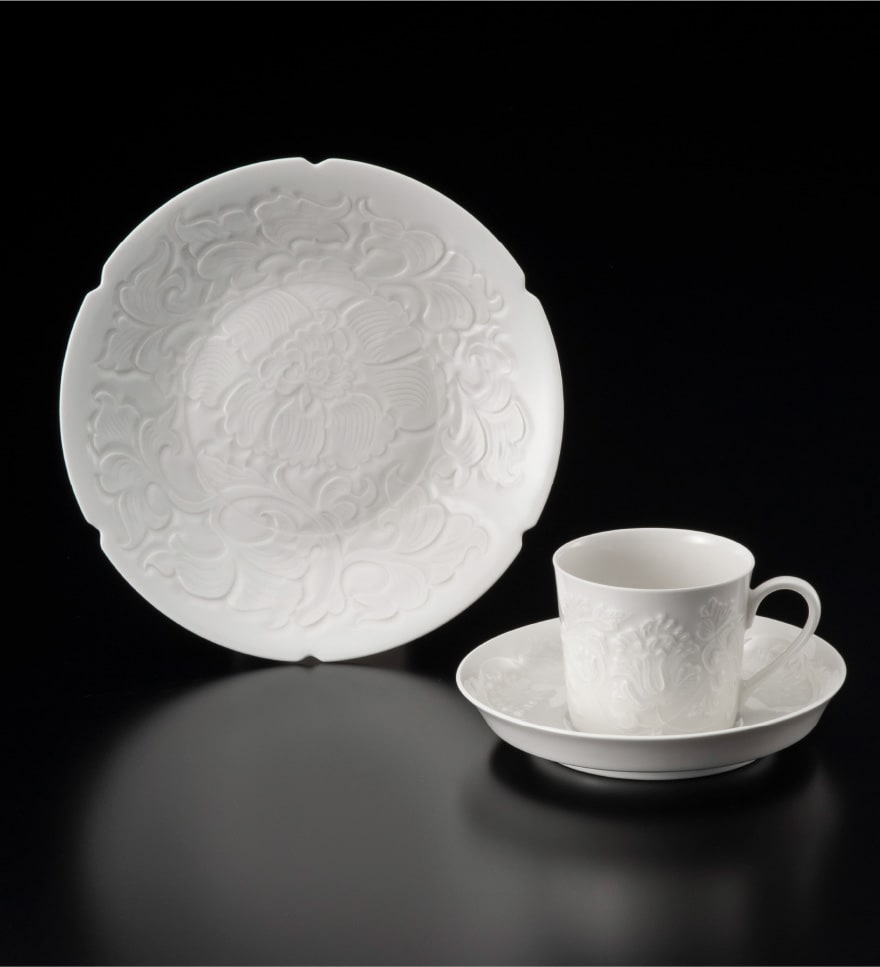Unique technique for creating celadon ware and white porcelain
Celadon contains small amounts of iron oxide. By minimizing the amount of oxygen entering the kiln before firing, Carbon monoxide is produced from the incomplete combustion and then iron oxide causes the natural jade green color. Depending on the thickness of the glaze, a gradient of beautiful celadon green shows up. On the other hand, white porcelain needs enough oxygen for combustion to occur during the firing process. As a result, the transparent glaze turns slightly cream-colored and gives a soft look to the original white biscuit color.
Another feature of celadon ware and white porcelain is a decorative carving technique called “Katagiribori”. Before the formed clay dries, refined arabesque patterns are carved using metallic carving tools. At that time, Kaiji’s Katagiribori decoration was second to none, especially the fine delicate pottery carved both inside and outside had breathtaking beauty. Kaiji acquired his own techniques of celadon ware and white porcelain, and then in 1983, he was made a Living National Treasure.









